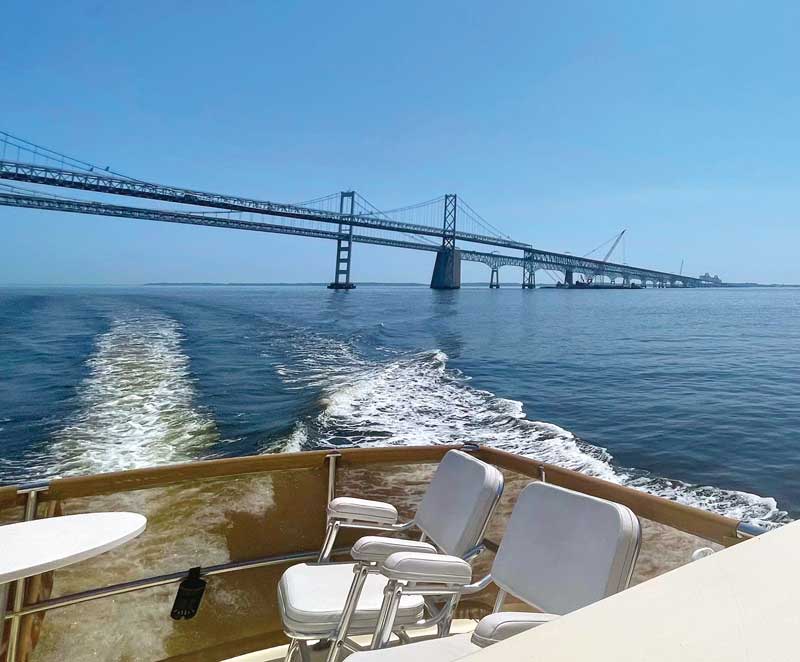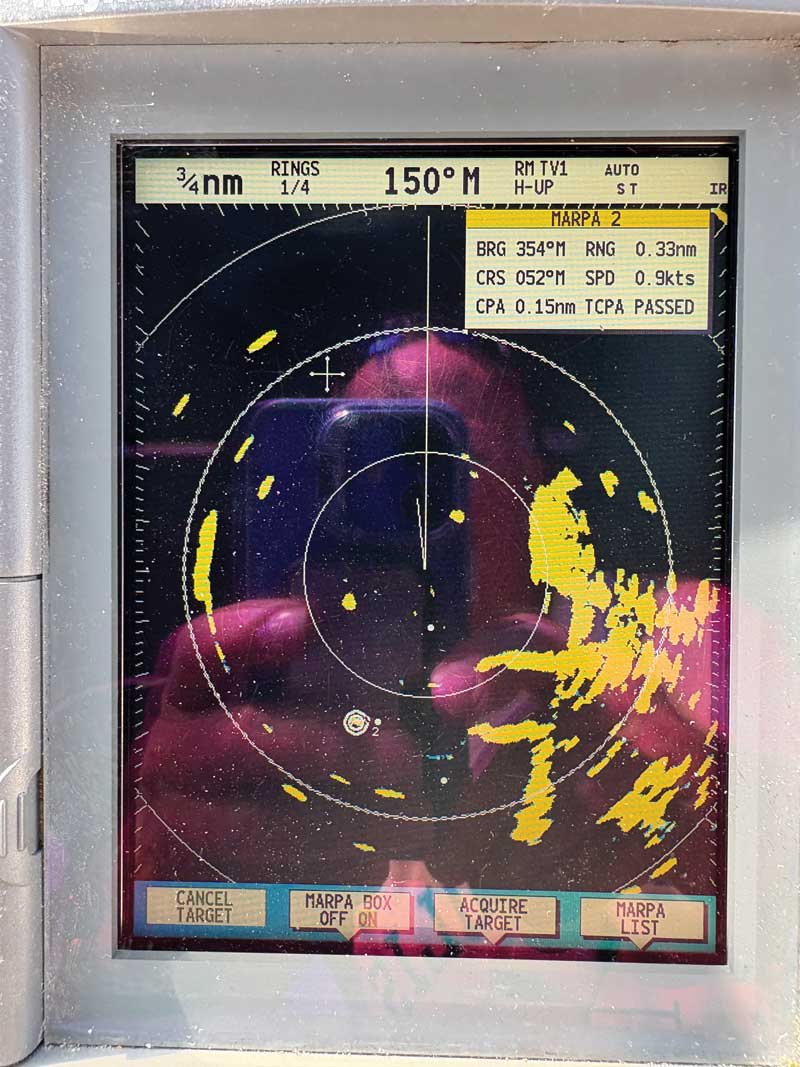We just spent a week cruising the Upper Chesapeake Bay with my boating group, America’s Boating Club—Valley Forge, and as I was traveling, I started to think about the benefits of having experienced boating friends. Of course, a group can also be a net negative, for example, cheering you on as you swallow oyster shooters at Middleton Tavern in Annapolis, but I digress.

When I first started boating on the Chesapeake, my only prior experience was on freshwater lakes. I knew very little about tide, currents, and even weather because my small upstate New York lake didn’t have any of those things (well, except for weather). But even weather wasn’t much of a factor since you were never more than a couple of miles from shore and the storms didn’t stir up much. Heck, if your engine died (mine did sometimes), you could tow your boat home by swimming with the line in your teeth. Usually, a friend would spot you floating aimlessly and come out to tow you in.
The Chesapeake, of course, is a different story. I wanted to take trips to Baltimore, Annapolis, St. Michaels, and others, but my meager experience on tidal waters stopped me from attempting any trip like that. My first trip past Turkey Point in my little open-bow runabout resulted in the tape deck (yes, I had a tape deck) escaping from the dashboard and crashing to the floor in multiple pieces when I hit the first big boat wake. I needed a friend to show me the ropes!
So, I joined a boating club and took some courses. Lots of courses. Despite being the “Valley Forge” club, all of its boating activities are on the Chesapeake, including the annual summer cruise. I saw my chance to learn from someone else and applied for membership. For some reason no one can figure out, they accepted me!
In my first summer after joining, I signed up for the annual summer cruise; this is where a group of boats, sometimes as many as 20 or more, would travel to three or four destination marinas, spend a day or two, and then head off to a new marina. This was perfect! I could meet up with another boater and follow them to a destination I dared not try on my own. Thus began my experience of boating, and learning, on the Chesapeake.
This summer, the cruise started out in Baltimore. The Patapsco is a busy river with large commercial ships sharing the waterway with you. I make it a point to avoid them even if I technically have the right of way. The saying goes: the rule of tonnage supersedes the rules of the road. This is not strictly true, but I think you know what I mean.
In this case my “friend” was my radar system. When traveling on the Bay, I like to use a feature on my radar that lets me track the large ships to determine their speed and closest point of approach (CPA). For those of you who have radar, I recommend you learn how to use it. On my system I simply activate the MARPA function (Mini-Automatic Radar Plotting Aid) and place my cursor on top of the blip that represents the ship. After a few moments, as the radar antenna does a few sweeps, the system will calculate those parameters for you.
On the screenshot below you can see the data on the Texas Triumph container ship as it passed through the gap where the Key Bridge was located before the accident. It was traveling at less than one knot in that narrow area as a cautionary measure. You can also see it was about a third of a nautical mile from me and that the CPA was 0.15 NM. TCPA is “time to closest point of approach” and that has passed, meaning the CPA was increasing, i.e. I was moving further away from the ship. If you have radar, you should use it; take a class or pick up a book or just (ugh) read the manual. (Or, maybe ask a friend!)
From Baltimore we headed to Annapolis, and even though I have been to these places many times I still plot a course. This time my “friend” was OpenCPN on my laptop, which is free, to plot the course from marina to marina. I then save the .GPX file created to an SD card, and I upload it to my chartplotter on the boat. You can also do this directly on your chartplotter, but it is a lot slower and a little finicky.

It’s then just a matter of activating that course when you set out. I like doing this for a couple of reasons: It tells me my “distance to destination” so I have an idea of how long it will take. It also keeps me out of shallow areas that I might drift into if I am not paying attention. And, it gives me something to monitor, which occupies my mind on those long and somewhat boring stretches.
If you have not traveled to a marina before, I’d advise getting a reservation ahead of time. You can do this via a reservation service such as Dockwa or Snag a Slip. You can also call the marina (although they may direct you to one of the services), and some marinas have user-friendly websites you can use.
In this case your friend is your VHF radio. Make a note of which VHF channel the marina monitors, and when the marina is in sight, hail them on the radio. A proper call sounds like this: “Haven Harbour, Haven Harbour, Haven Harbour, this is the vessel Sloop John B on channel 16 over.” The marina responds, hopefully, and directs you to a “working” channel to complete the discussion. They will give you a slip assignment and give you some directions to get there. Note that while it is often possible to get a slip at the last minute, you might have trouble doing so on a busy weekend or holiday.
In short, you have a boat, get out there and use it, invite a friend along, and make use of your electronic “friends” as you travel. If you are short of experience, join a group, like a yacht club or a chapter of the United States Power Squadrons (aka America’s Boating Club) and sign up for one of their cruises. They will get you started and your enjoyment on the water will be enhanced by spending it with friends. See you on the Bay!
By Gary Armstrong